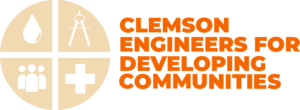Waste Management
The Solid Waste Management (SWM) team has continued its research into solutions to Cange’s waste problem. The town of Cange continues to struggle with the accumulation of waste, with no viable method to dispose of it. The goal of the SWM team is to research a method that would allow the town to properly dispose of a portion of their waste while also serving a positive role in the local economy.
